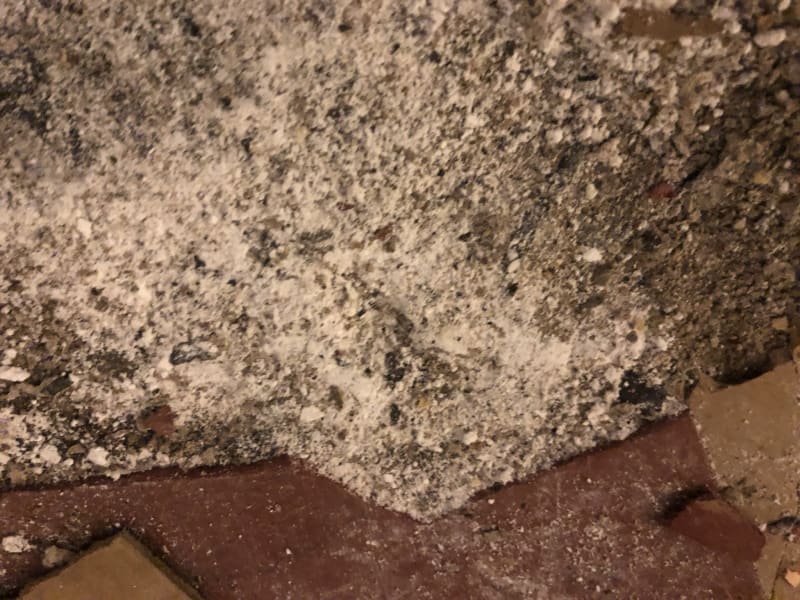Hi,
I have two occurences where some efflorescence was found on a basement slab on grade. Each time, the efflorescence was located along the residual glue joints of an old vinyle flooring installed directly against the slab. The thing is that it seems to migrate thru the slab rapidly and it desintegrates the slab itself. Efflorescence should not be a rapid phenomenon, so I am doubtful. I also have a photo of it.

I have two occurences where some efflorescence was found on a basement slab on grade. Each time, the efflorescence was located along the residual glue joints of an old vinyle flooring installed directly against the slab. The thing is that it seems to migrate thru the slab rapidly and it desintegrates the slab itself. Efflorescence should not be a rapid phenomenon, so I am doubtful. I also have a photo of it.

